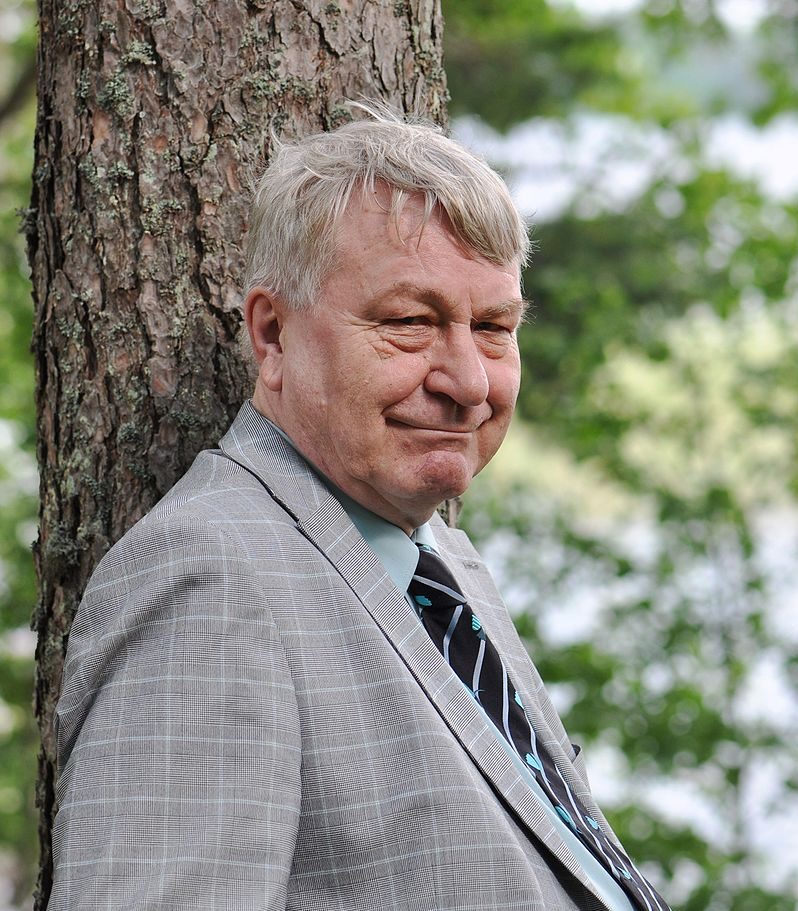Vexi Salmi, 16 May 2016
My Hämeenlinna is a misty dream image made of memories. Passage to it is over an arched bridge over Lake Vanajavesi and three dry bridges. It is a town plan laid down by Carl Ludvig Engel, with wooden Empire houses lining square blocks. The harmony is punctuated by a few stone houses and a church. They are landmarks that give a person walking on the streets, which are paved with cobblestones and rectangular paving stones, the sense of a city. The four bridges guarded the integrity of the city centre. They sheltered the centre from changes, new ideas and modernity.
The arched bridge of Vanajavesi guarded the people arriving from the east. It only allowed one car to cross at a time, and their warning rumble could be heard far away. The dry bridges of Eteläkatu and Lukiokatu were paved with uneven cobblestones. The strong vibration forced arriving motorists to slow down. Only the centre bridge, Turuntie bridge, was paved more evenly. It was the main route from the south and west to the city centre. However, it also had a treacherous downhill slope. In the autumn and winter, Suomen Kasarmi hill was slippery, sometimes icy, and we little boys used to cheer when lorries slid sideways down the icy strip and finally crashed into the thick birch trees next to the bridge.
The other sides of the city centre bordered on Lake Vanajavesi, ridges and a swampy meadow. Hämeenlinna was much harder to access than the sturdy castle standing next to it.
Hämeenlinna resisted the pressure to change for decades. A few new blocks of flats did not upset the peace of the city residents. The success of the local sports clubs Tarmo and HPK in the SM-sarja ice hockey series was enough for the people, and when a team from Tampere or Helsinki was defeated at the rink on Kaivokatu, it was a cause for celebration.
The changes began in the early 1960s. The arched bridge of Vanajavesi was replaced with a wide new concrete bridge, and the motor highway that ended at the hollow of Hattelmala Ridge was widened into a motorway at Hämeenlinna. The dry bridges and their birch lanes disappeared, as did the ice hockey arena. Hämeenlinna’s sports clubs played in the less prestigious Suomi series, and the city centre was ravaged by bulldozers and excavators.
An Empire building after another made way for squat supermarkets and office buildings. Due to public pressure, a few buildings were carefully taken apart and the logs numbered, such as Eino Leino’s school block and Larin-Kyösti’s townhomes. However, the buildings were never put together again. The logs rotted away under tarps, and the Kaupunginpuisto museum area turned out to be an empty promise. Only the birthplace of Jean Sibelius was left behind, squeezed next to the commercial quarter, as a reminder of the past.
My Hämeenlinna can only be accessed over a dry bridge of dreams. I take a shortcut through the old cemetery and greet town doctor Sibelius, Jean’s father, who is wondering at the endless stream of cars speeding past his resting place under the begonias. The wheel of time is merciless. Like a millstone, it crushes years of life lived into memories. It is difficult to share them with present-day residents; I must walk alone with them. When I close my eyes and let them loose: Levy-Heikki walks along Raatihuoneenkatu from Soitinaitta to Pyöräpirtti and mumbles to himself. Toppo Helisevä observes the few passers-by at the corner of the square, and Pyörivä-Jukka keeps glancing behind himself. That is my Hämeenlinna.
